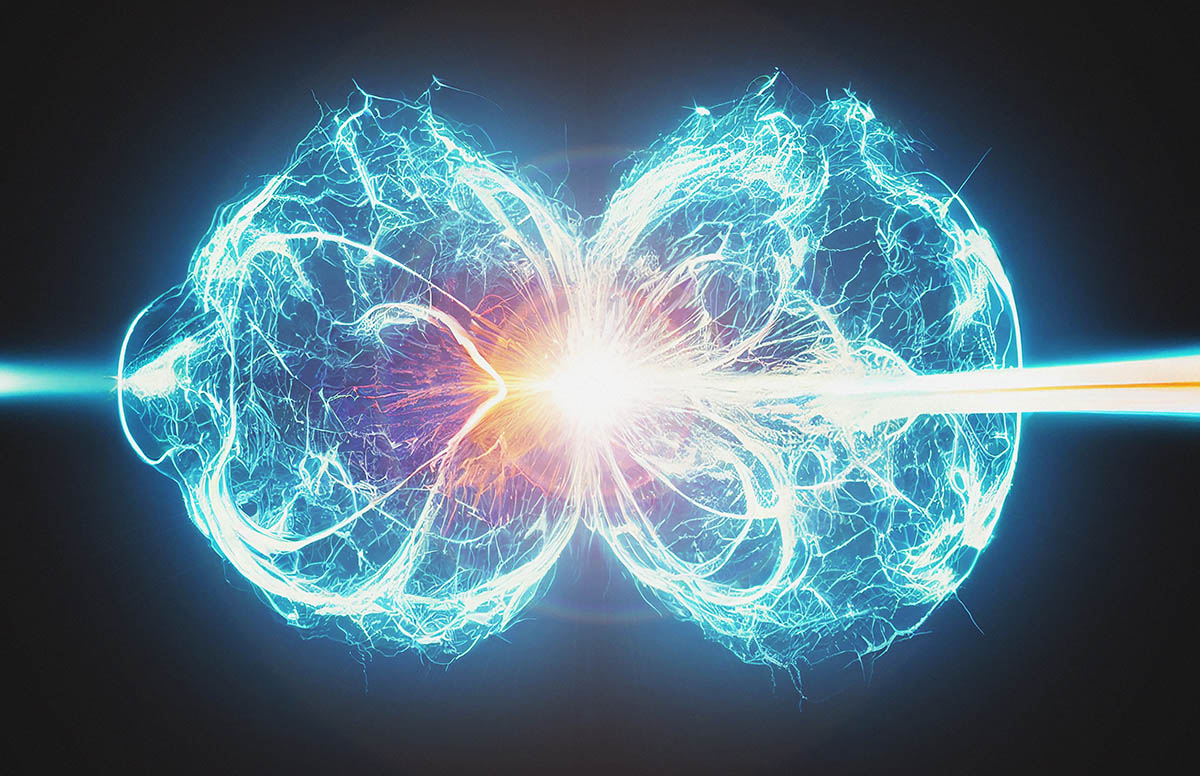Nuclear Fusion: The Future of Energy
Nuclear Fusion Emerges as a Viable Energy Source
In the pursuit of sustainable energy solutions, scientists and engineers have long sought the elusive dream of harnessing the power of nuclear fusion. Often dubbed the “holy grail” of energy production, nuclear fusion has long been tantalisingly out of reach.
However, recent breakthroughs in research and technology from the Lawrence Livermore National Laboratory in California have brought us closer than ever to making this clean, virtually limitless energy source a reality.
Let’s explore the promising developments that are making nuclear fusion a viable energy source for the future.
What is nuclear fusion, and how does it work?
Nuclear fusion is when two tiny particles, usually hydrogen atoms, come together to create one bigger atom. When this happens, they release an enormous amount of energy. It’s the way the sun creates its energy.
Imagine you have two balloons filled with little balls (representing atoms). When you smash those two balloons together hard, the balls inside them collide and stick together, making one big balloon. In the process, they release a burst of energy, just like when you pop a balloon, and it makes a loud noise.
Nuclear fusion is like that, but instead of balloons and balls, it is atoms coming together and turning into a different kind of atom.
What are the latest advances in nuclear fusion technology?
Nuclear fusion is no longer the stuff of science fiction; it is edging closer to becoming a practical energy source that can transform the world’s energy landscape.
In late 2022, the US Department of Energy reported a breakthrough at Lawrence Livermore National Laboratory’s National Ignition Facility. It conducted the first controlled fusion experiment in history to reach a scientific energy breakeven. This means it produced more energy from fusion than the laser energy used to drive it. In total, the experiment generated 3.15 megajoules of energy output after the laser delivered 2.05 megajoules to the target.
The same experiment was repeated successfully in August 2023, once again using lasers to fuse two atoms.
“This astonishing scientific advance puts us on the precipice of a future no longer reliant on fossil fuels but instead powered by new clean fusion energy,” reported U.S. Senate Majority Leader Charles Schumer.
What is the potential for harnessing clean nuclear fusion energy?
If nuclear fusion can be achieved on an industrial scale, it has the potential to supply an almost limitless, clean, safe and affordable energy source to satisfy the world’s energy needs.
According to the International Atomic Energy Agency, nuclear fusion could produce energy at a rate four times greater per kilogram of fuel compared to fission (utilized in nuclear power plants) and nearly four million times more energy than the combustion of oil or coal.
How far into the future could widescale nuclear fusion become a reality for all?
While the milestone certainly represents a big deal for the clean energy industry, the development of the technology is still in its infancy stages.
The LLL experiment successfully ignited one fusion capsule one time. Realising commercial fusion energy requires a multitude of these fusion events to occur regularly. This necessitates the development of a robust system of drivers to enable sustained fusion reactions.
Kim Budil, the director of the Lawrence Livermore Lab’s estimate of “a few decades of research on the underlying technologies” highlights the long-term nature of the challenge.
Roadblocks aside, it’s important to maintain an optimistic and globally united outlook on nuclear fusion. If nations can come together to tackle this monumental scientific and technological endeavour, it encourages collaborative research, shared resources, and a collective commitment to a brighter, greener energy future.
Nuclear Fusion: The Future of Energy
Nuclear Fusion Emerges as a Viable Energy Source
In the pursuit of sustainable energy solutions, scientists and engineers have long sought the elusive dream of harnessing the power of nuclear fusion. Often dubbed the “holy grail” of energy production, nuclear fusion has long been tantalisingly out of reach.
However, recent breakthroughs in research and technology from the Lawrence Livermore National Laboratory in California have brought us closer than ever to making this clean, virtually limitless energy source a reality.
Let’s explore the promising developments that are making nuclear fusion a viable energy source for the future.
What is nuclear fusion, and how does it work?
Nuclear fusion is when two tiny particles, usually hydrogen atoms, come together to create one bigger atom. When this happens, they release an enormous amount of energy. It’s the way the sun creates its energy.
Imagine you have two balloons filled with little balls (representing atoms). When you smash those two balloons together hard, the balls inside them collide and stick together, making one big balloon. In the process, they release a burst of energy, just like when you pop a balloon, and it makes a loud noise.
Nuclear fusion is like that, but instead of balloons and balls, it is atoms coming together and turning into a different kind of atom.
What are the latest advances in nuclear fusion technology?
Nuclear fusion is no longer the stuff of science fiction; it is edging closer to becoming a practical energy source that can transform the world’s energy landscape.
In late 2022, the US Department of Energy reported a breakthrough at Lawrence Livermore National Laboratory’s National Ignition Facility. It conducted the first controlled fusion experiment in history to reach a scientific energy breakeven. This means it produced more energy from fusion than the laser energy used to drive it. In total, the experiment generated 3.15 megajoules of energy output after the laser delivered 2.05 megajoules to the target.
The same experiment was repeated successfully in August 2023, once again using lasers to fuse two atoms.
“This astonishing scientific advance puts us on the precipice of a future no longer reliant on fossil fuels but instead powered by new clean fusion energy,” reported U.S. Senate Majority Leader Charles Schumer.
What is the potential for harnessing clean nuclear fusion energy?
If nuclear fusion can be achieved on an industrial scale, it has the potential to supply an almost limitless, clean, safe and affordable energy source to satisfy the world’s energy needs.
According to the International Atomic Energy Agency, nuclear fusion could produce energy at a rate four times greater per kilogram of fuel compared to fission (utilized in nuclear power plants) and nearly four million times more energy than the combustion of oil or coal.
How far into the future could widescale nuclear fusion become a reality for all?
While the milestone certainly represents a big deal for the clean energy industry, the development of the technology is still in its infancy stages.
The LLL experiment successfully ignited one fusion capsule one time. Realising commercial fusion energy requires a multitude of these fusion events to occur regularly. This necessitates the development of a robust system of drivers to enable sustained fusion reactions.
Kim Budil, the director of the Lawrence Livermore Lab’s estimate of “a few decades of research on the underlying technologies” highlights the long-term nature of the challenge.
Roadblocks aside, it’s important to maintain an optimistic and globally united outlook on nuclear fusion. If nations can come together to tackle this monumental scientific and technological endeavour, it encourages collaborative research, shared resources, and a collective commitment to a brighter, greener energy future.






